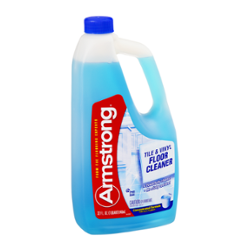Health issue
Level of Concern
Source
Very toxic to aquatic life
high
EU GHS Hazard Labeling Codes: GHS Hazard Codes
Causes severe skin burns and eye damage
Only in: Oven Cleaner; Drain Opener/Clog Remover; Hard Water Stain Remover; Toilet Cleaner; Stove Top Cleaner; Household Cleaners
high
EU GHS Hazard Labeling Codes: GHS Hazard Codes
Asthmagen (sensitizing)
moderate
Association of Occupational and Environmental Clinics (AOEC): AOEC Exposure Code List (2020 Update)
Causes severe skin burns and eye damage
Only in: Drain Opener/Clog Remover; Oven Cleaner; Hard Water Stain Remover; Toilet Cleaner; Stove Top Cleaner; Household Cleaners
some
EU GHS Hazard Labeling Codes: GHS Hazard Codes
Harmful in contact with skin
Only in: Household Cleaners
some
European Chemicals Agency (ECHA): GHS Data from ECHA Website
Toxic of swallowed
Only in: Household Cleaners
some
European Chemicals Agency (ECHA): GHS Data from ECHA Website
may cause respiratory irritation
Only in: Household Cleaners
some
European Chemicals Agency (ECHA): GHS Data from ECHA Website
Causes serious eye damage
Only in: Household Cleaners
some
European Chemicals Agency (ECHA): GHS Data from ECHA Website
This substance is Generally Recognized as Safe (GRAS) as a food additive by the US Food and Drug Administration
Only in: Household Cleaners
low
U.S. Food and Drug Administration (FDA): FDA - Priority based Assessment of Food Additive (PAFA)
Health issue
Level of Concern
Source
Impurity: AMMONIA GAS
Very toxic to aquatic life
some
EU GHS Hazard Labeling Codes: GHS Hazard Codes
Impurity: AMMONIA GAS
Causes severe skin burns and eye damage
Only in: Oven Cleaner; Drain Opener/Clog Remover; Hard Water Stain Remover; Toilet Cleaner; Stove Top Cleaner; Household Cleaners
some
EU GHS Hazard Labeling Codes: GHS Hazard Codes
Impurity: AMMONIA GAS
Asthmagen (sensitizing)
some
Association of Occupational and Environmental Clinics (AOEC): AOEC Exposure Code List (2020 Update)
Impurity: AMMONIA GAS
Toxic if inhaled
Only in: Household Cleaners
some
EU GHS Hazard Labeling Codes: GHS Hazard Codes
Impurity: AMMONIA GAS
Causes severe skin burns and eye damage
Only in: Drain Opener/Clog Remover; Oven Cleaner; Hard Water Stain Remover; Toilet Cleaner; Stove Top Cleaner; Household Cleaners
some
EU GHS Hazard Labeling Codes: GHS Hazard Codes
Impurity: AMMONIA GAS
Causes pulmonary edema
some
Centers for Disease Control and Prevention (CDC): NIOSH Pocket Guide to Chemical Hazards
Impurity: AMMONIA GAS
Causes skin corrosion
Only in: Oven Cleaner; Drain Opener/Clog Remover
some
Centers for Disease Control and Prevention (CDC): NIOSH Pocket Guide to Chemical Hazards
Impurity: AMMONIA GAS
eye damage
some
American Conference of Governmental Industrial Hygienists (ACGIH): Threshold Limit Value (TLV) Basis
Impurity: AMMONIA GAS
Asthmagen (irritation)
some
Association of Occupational and Environmental Clinics (AOEC): AOEC Exposure Code List (2020 Update)
Impurity: AMMONIA GAS
Causes respiratory irritation
some
Centers for Disease Control and Prevention (CDC): NIOSH Pocket Guide to Chemical Hazards
Impurity: AMMONIA GAS
Causes dermatitis, skin allergy
some
Centers for Disease Control and Prevention (CDC): NIOSH Pocket Guide to Chemical Hazards
Impurity: AMMONIA GAS
upper respiratory tract irritation
some
American Conference of Governmental Industrial Hygienists (ACGIH): Threshold Limit Value (TLV) Basis
Impurity: AMMONIA GAS
Causes skin irritation
some
Centers for Disease Control and Prevention (CDC): NIOSH Pocket Guide to Chemical Hazards




























